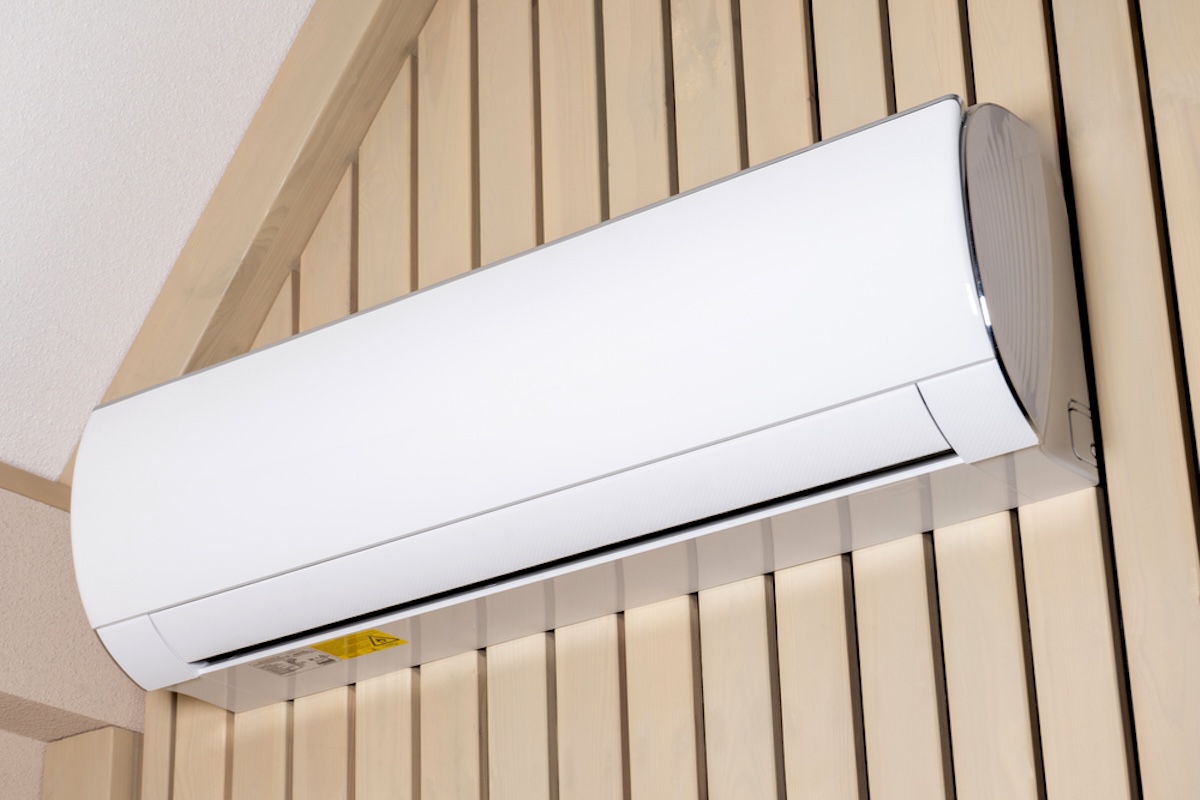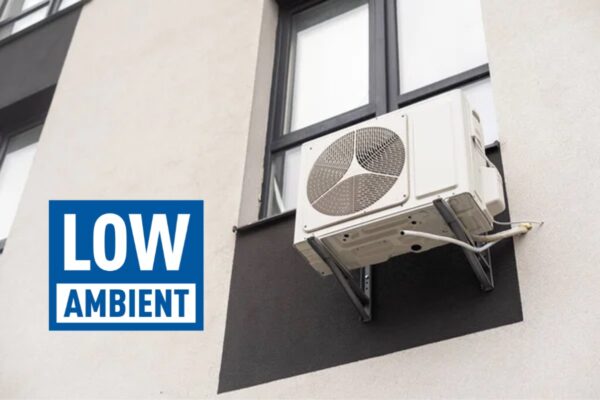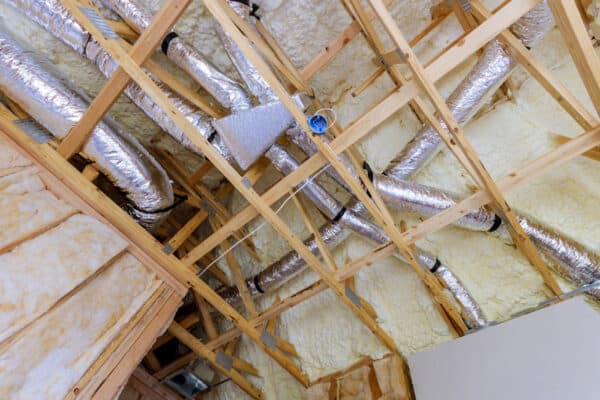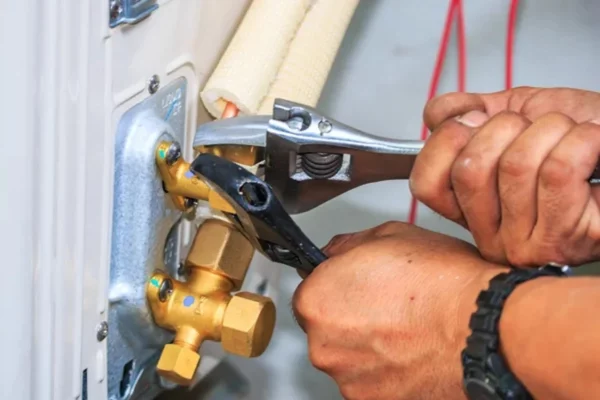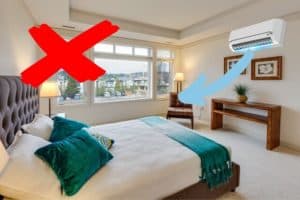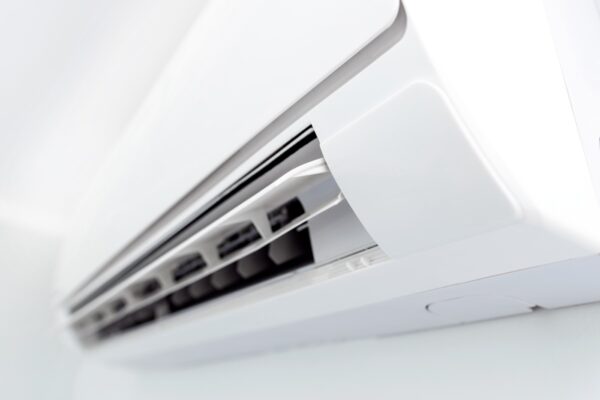List of Best Mini Splits in Spring 2024
Whenever my customers consult me about mini split, they always ask for my opinion on which mini split they should buy. Since now is a good time to get prepared, I’d like to share my list of best mini splits for different situations and why.
In summary, my list of best mini splits to buy in spring 2024 are (ranking doesn’t matter):
| No. | Mini Split | Best for | Jump to Section |
|---|---|---|---|
| 1 | Daikin Atmosphera | Overall Performance | Pros & Cons |
| 2 | MRCOOL DIY (Single Zone & Multi-Zone) | DIY-ability | Single Zone | Multi Zone |
| 3 | Senville LETO | DIY, 115V and Low Cost | DIY | 115V | Low Cost |
| 4 | Pioneer Diamante | DIY and Low Cost | DIY | Low Cost |
| 5 | Fujitsu Airstage LZBS1 | Energy Efficiency (Highest SEER) | SEER Number |
| 6 | Mitsubishi MSZ-FS (Hyper-Heating) | Energy Efficiency and Heating in Extreme Cold Climates | SEER Number | Heating Performance |
| 7 | Mitsubishi MXZ-NAHZ (Hyper-Heating) | Multi-Zone Heating | Multi Zone |
| 8 | Fujitsu Hybrid Flex Inverter | Multi-Zone | Multi Zone |
| 9 | Daikin MXS Series | Multi-Zone | Multi Zone |
| 10 | Daikin CIRRA | Two Zones | Multi Zone |
| 11 | Fujitsu 09RL2 & 12RL2 | 115V and Low Cost | 115V | Low Cost |
| 12 | Fujitsu LMAS | Quiet Large Capacity | Sound Level |
| 13 | Daikin OTERRA | Cooling Only and Low Cost | AC Only | Low Cost |
| 14 | Mitsubishi MUY-GL | Cooling Only | AC Only |
| 15 | Daikin ENTRA | Low Cost | Low Cost |
| 16 | Fujitsu LPAS Series | Low Cost | Low Cost |
| 17 | Mitsubishi MSZ-WR | Low Cost | Low Cost |
| 18 | Fujitsu LUAS | Efficient Mid Static Ducted | Ducted |
| 19 | Mitsubishi SEZ-KD | Low Static Ducted | Ducted |
| 20 | Daikin LV Series (9k & 12k) | Low Cost Low Static Ducted | Ducted |
| 21 | Daikin AURORA | Floor-Mounted | Floor |
| 22 | Daikin VISTA | 4-Way Ceiling Cassette | Ceiling Cassette |
| 23 | Mitsubishi MLZ-KP | 1-Way Ceiling Cassette | Ceiling Cassette |
At first glance, it might seem like there’s a a lot to choose from. However, as you go through the sections, you’ll see how I specifically recommend certain mini splits under certain circumstances.
Affiliate Disclosure
Let’s start with some transparency.
I’m not affiliated to any mini split brand/vendor. However, I am a participant of the Amazon affiliate program. So, if you use my Amazon link to buy, I’ll get a small commission. Having said that, most mini splits listed here are not going to be available on Amazon anyway.
Bottomline is, I’m not incentivised to promote any particular brand. So, a little bit more fairness here.
Also, for first time visitors, I’m an HVAC professional with about 10 years of experience. I dealt with hundreds of mini splits in my past projects across many different brands. So, I’d like to use my little insights to add some value to my readers.
Now, let’s go through some of the basis of my selection.
How I Select the Mini Split?
The best mini split for you is going to be the one that matches most of your requirements. For example, the obvious ones like capacity, indoor unit type and price. Then, the not so obvious one like availability, convenience and security (warranty).
So, make sure you get the capacity right. If you need help, I have a mini split sizing guide that you can refer. For the indoor unit type, you can read my 5 types of mini split indoor units post to see if there’s anything else that you want to consider.
Other than special requirements like low ambient heating and DIY installation, most of the time, I would recommend something that’s reliable, energy efficient and reasonably priced.
To let you know in advance, my first choice of mini split brand is either Mitsubishi, Daikin or Fujitsu. A very simple reason is because they have been making mini splits for decades.
From my experience, Mitsubishi, Daikin and Fujitsu all make great quality products. I know other brands that make great products too, for example, Panasonic, LG and Gree.
However, consider the number of authorized dealers (availability and serviceability), I won’t recommend some of the brands at this moment even though they make great products.
A mini split may be well produced but if the installation is poor, it is a bad deal. Not to mention, the bad experience you get when the after-sales support is weak. Until then, I’ll keep them in view.
Enough talk, let’s dive into the best mini splits to buy in spring 2024.
Best Mini Splits to Buy in Spring 2024
Different people have different needs. So, I come out with 12 situations where you might be in. In each situation, I’ll suggest a few mini splits (whenever possible) and explain why so that you can choose the one that fits you the most.
Overall Best Mini Split
If you don’t have any specific requirement and just want to know which mini split is the best in overall performance, I would say it is the Daikin Atmosphera.
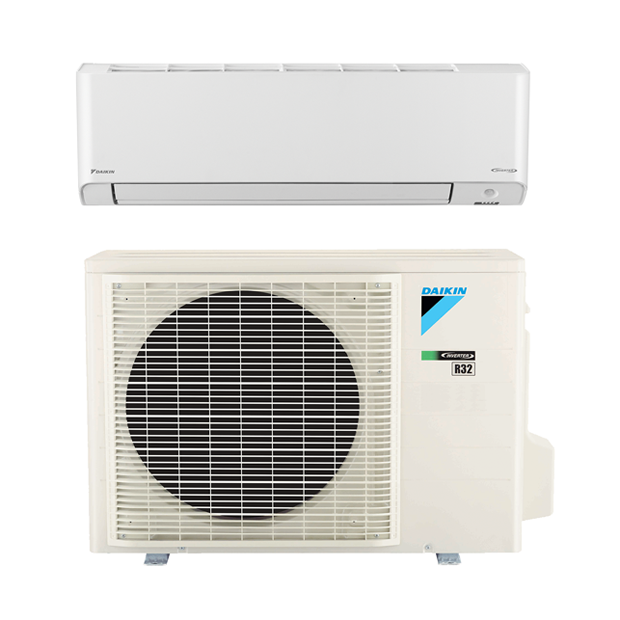
The Daikin’s Atmosphera mini split series is the first mini split that uses the new R32 refrigerant. Due to climate policy, R32 refrigerant will eventually replace the R410A refrigerant found in most mini splits. So, you won’t go wrong getting a R32 mini split.
But, refrigerant is not the reason I recommend the Daikin Atmosphera. It’s because:
- Daikin is the largest air conditioner manufacturer in the world.
- The Atmosphera series has above average energy efficiency (SEER2 up to 27.4).
- It has a wide operating range, good for heating (up to 100% rated heating capacity at 5°FWB).
- It comes with mobile app control, not an optional add-on.
- It has several optional accessories such as deordorizing filter and smart thermostat.
- It uses the next-gen R32 refrigerant which is better for the environment and future-proof.
- It is pre-charged with refrigerant up to 49 ft of pipe length (normally is 25 ft only).
- Daikin provides 12-year parts warranty and an optional 12-year labor warranty.
- Competitive price given its specifications.
Overall, Daikin Atmosphera is an energy efficient, high performance and worry-free mini split heat pump that is also better for the environment. However, it has some downsides too:
- May have a long lead time depending on your location because of high demand.
- R32 is not yet approved in a few states including Nevada, California and Georgia (as of March 2024).
- Online purchase is not possible. Only through Daikin’s authorized dealers.
- Online registration within 60 days of installation is needed to get the 12-year parts warranty.
- Doesn’t come with the installation kit.
- Not a DIY option.
- Not a budget option (I estimate the retail price just for the unit itself is $1.7k for the 9k BTU model).
For the most part, the downside of the Daikin Atmosphera is its price and availability. Many homeowners want to get the Atmosphera mini split but were told to wait due to no stock. However, if you enquire now (a few months before summer), there is a high chance of getting one.
So, if you’re interested, head to the Daikin Atmosphera main website to check the availability of R32 refrigerant in your state (scroll to the bottom) and submit your enquiry to Daikin.
But, if you’re looking for a more affordable option (low price or DIY-able), or you have specific needs like low ambient heating (extreme cold climate), or you want a multi-zone system instead, then the other mini splits listed below might be a better choice for you.
Best DIY Mini Split
DIY is a good way to save cost. However, most reputable brands don’t allow DIY (they void the warranty if you install it yourself). So, it is best to choose from those that encourage DIY and offer some warranty coverage for DIY installation.
For the best DIY experience, I would suggest the MRCOOL DIY series. The core value of MRCOOL’s DIY mini split is literally DIY. MRCOOL provides a well-thought installation kit and a comprehensive set of video and text guides to help you success in DIY installation.

Not only that, there are many homeowners share about their success in DIY installation with the MRCOOL DIY series. For the most part, it is the pipe fittings, the accessories (insulation tapes, pipe covers, etc.) and the guidance MRCOOL provides.
However, the upfront cost for a MRCOOl DIY mini split is not low. The starting price is nearly $1.9k for the 12k BTU model as listed on Amazon. But, it is with the installation kit included. Thus, around $2k or so is pretty much all you need to fork out to get a 12k BTU mini split.
If you need something even more affordable, the Senville LETO (view on Amazon) and Pioneer Diamante (view on Amazon) are a tradeoff between price and DIY-ability.


Both the Senville LETO and Pioneer Diamante starts at around $800 only for the 12k BTU model (230V). Although they also come with the installation kit, many homeowners don’t recommend DIY installation unless you have experience or you willing to take the time to learn.
For the most part, I think the downside of Senville LETO and Pioneer Diamante against the MRCOOL DIY is the refrigerant pipe vacuum work. The “Quick Connect” line sets included in the MRCOOL’s installation kit is pre-charged with refrigerant. This means you don’t have to buy a vacuum pump to evacuate the moisture in the copper pipes which is an important step to ensure good performance.
In summary, if you’re not familiar with DIY but wanna try out, I suggest you get the MRCOOL DIY mini split. But, if willing to take the time to learn, the Senville LETO or the Pioneer Diamante can save you a lot.
Best SEER Mini Split
The electricity cost in some states like California and Massachusetts is above average, with Hawaii being the highest (as of March 2024). So, getting a mini split with the highest SEER number is extra beneficial.
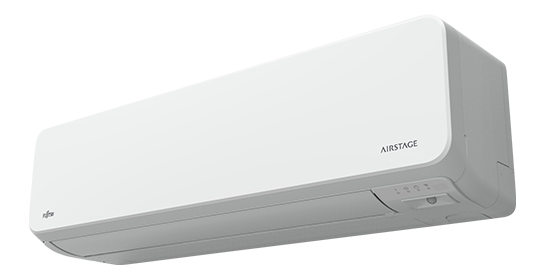
As of March 2024, the most energy efficient mini split (highest SEER number) is the Fujitsu Airstage LZBS1 series. For more context, here is a comparison of the SEER number of the 3 mini splits I mentioned in this post:
| Capacity | Fujitsu LZBS1 | Daikin Atmosphera | Senville LETO |
|---|---|---|---|
| 9k BTU | 33.1 | 27.4 | 21.5 |
| 12k BTU | 29.4 | 25.2 | 20.8 |
| 15k BTU | 25.3 | – | – |
| 18k BTU | – | 22.7 | 19.0 |
| 24k BTU | – | 22.0 | 18.0 |
Since 1st January 2023, seasonal energy efficiency ratio 2 (SEER2) is the new energy rating system for air conditioners. It is a more accurate measurement than the old SEER system.
Under the new rating system, some of the previous high-SEER mini splits see a significant drop in their efficiency number. For instance, the Carrier Infinity 9k BTU and the Gree Sapphire 9k BTU previously had a SEER number of 42 and 38 respectively which made them the top 1 and top 2 energy efficient mini split. With the new SEER2 system, their respective number drop to 28.5 and 27.
Meanwhile, the Fujitsu Airstage LZBS1 series maintain its SEER number exactly as it is.
See the Airstage LZBS1 series in detail on Fujitsu’s website.
Another mini split worth mentioning is the Mitsubishi MSZ-FS series. It is the second most energy efficient mini split now with an SEER2 number up to 32.2 (previously SEER 33.1) for the 6k BTU model. For comparison, the 9k BTU model has a SEER2 number of 29.8 (previously SEER 30.5).
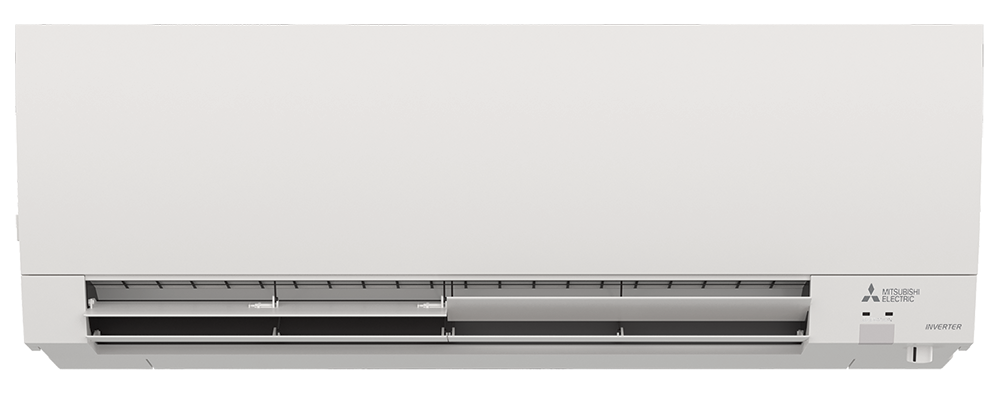
So, if you only need 6k BTU, Mitsubishi can offer you a very energy efficient one.
Here is the MSZ-FS series on Mitsubishi’s website (Mitsubishi hasn’t update to SEER2 as of March 2024).
High SEER mini splits are not budget friendly. So, be sure to calculate your ROI (return on investment) before deciding to go for the highest SEER one.
Best Heating Mini Split
Homeowners living in extreme cold climates need a mini split that has exceptional heating performance, especially at prolonged low ambient temperature environment.
For cold climate applications, I would only recommend the Mitsubishi MSZ-FS (NAH) hyper-heating model at this moment. The reason is as follows:
- Heating is a critical need in cold climates. Mitsubishi is known for their reliability.
- Shorter repair time and better parts availability due to its popularity.
- The hyper-heating model ensures 100% heating capacity down to -5°F.
- Operation guaranteed at -13°F.
- The NAH model comes standard with base heater to prevent drain water freezing.
- Highest heating efficiency at low ambient temperatures (COP 2.46 at -5°F).
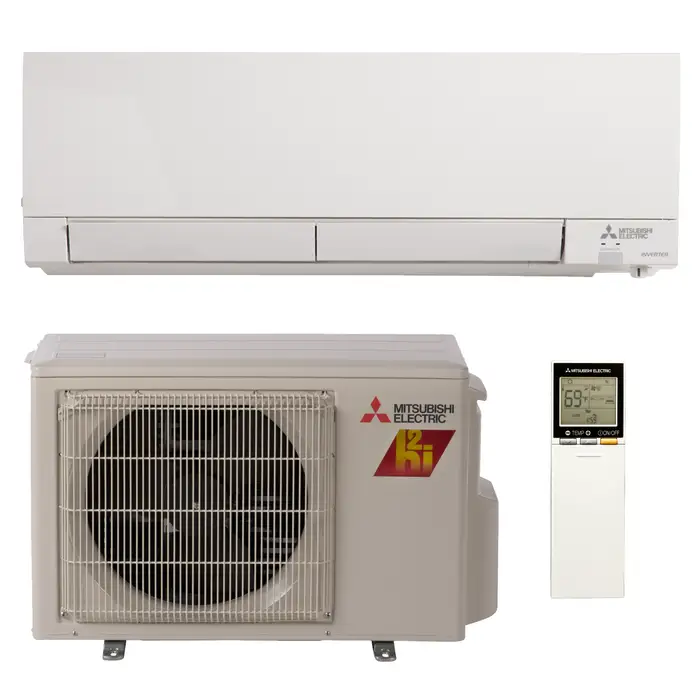
To be able to use a mini split heat pump as the primary (or sole) heating system, you need reliability. The Mitsubishi MSZ-FS (NAH) hyper-heating model is the only one I can comfortably recommend now.
Other mini splits designed for cold climates are good too but I just have more confident in this one after the extensive researches that I done for my blogging work for the past 3 years.
So, if you’re looking for the best mini split in terms of heating performance in cold climates, do check the MSZ-FS (NAH) hyper-heating model with your local contractors. See the exact product here (non-affiliated link).
Best Multi Zone Mini Split
If you need 3-4 mini splits, you most likely prefer a multi zone system. Fortunately, multi-zone systems are more or less the same. It all boils down to your specific needs.
For instance, if you need a multi-zone system that can perform very well in cold climates, then the Mitsubishi MXZ-NAHZ hyper-heating model is my first choice. But, if you’re not looking for a cold climate model, then a standard and more affordable one would be the Fujitsu Hybrid Flex Inverter series or the Daikin MXS series.
- See the MXZ-NAHZ on Mitsubishi’s website
- See the Hybrid Flex Inverter on Fujitsu’s website
- See the MXS series on Daikin’s website
In the case where you only need two zones (two mini splits), I recommend you check out the Daikin CIRRA series. It is a budget-friendly system (see price on Amazon) offered by Daikin in exchange for lower efficiency.
For DIY-ability, the MRCOOL DIY multi-zone (view on Amazon) is equally good. But, it cost as much as the Daikin CIRRA (if compare two zones) despite the installation kit is included. Nonetheless, DIY is only possible with MRCOOL.
Multi-zone mini splits are neater and better looking (less outdoor units) but their energy efficiency is significantly lower than single-zone mini splits. So, I would encourage single-zone whenever possible.
Best 115 Volt Mini Split
9k and 12k BTU mini splits are available in both 115V and 230V (higher capacities are all 230V). In certain applications such as using a mini split in RV or camper, the 115V version is more convenient.
However, Mitsubishi and Daikin don’t offer 115V model. Fortunately, Fujitsu has it, it’s the 9RL2 and 12RL2. What’s remarkable about this mini split is their indoor unit height is the lowest (10.3″ only). This makes its installation possible in tight spaces such as the RV interior, above doors and above windows.
Another 115V mini split worth considering is from the Senville LETO series (view 115V model on Amazon). Similarly, I recommend it because the indoor unit is among the smallest in overall physical dimension. Height wise, the Fujitsu still win.
115V mini splits are more simple and more convenient to install. However, the tradeoff is less energy efficiency and limited capacity (9k and 12k BTU only). Still, applications such as RV would definitely benefit from the lower voltage requirement.
Best Quiet Mini Split
Mini splits are quiet by default. The highest sound level (highest fan speed) produced by the mini split indoor unit is typically around 49 dBA and 57 dBA for the outdoor unit based on 24k BTU. The higher the capacity, the greater the noise.
However, there are mini splits which the indoor unit is quiet but the outdoor unit is well above 60 dBA. While, the outdoor unit is usually not a problem, some homeowners may need the outdoor unit to be quiet as well.
In that case, I suggest the Fujitsu LMAS series (view on Fujitsu’s website). The 24k BTU model in the LMAS series produces 48 dBA for the indoor unit and 54 dBA for the outdoor unit at most.
Given the capacity, some of its competitors produces above 50 dBA for the indoor unit and above 60 dBA for the outdoor unit. So, the Fujitsu LMAS series is a good one if you need something big and quiet.
For something even bigger like a 5-zone outdoor unit, the Daikin MXS, Mitsubishi MXZ-NAHZ (hyper-heating) and Fujitsu Hybrid Flex Inverter are all very quiet at maximum load (~55 dBA). See the links provided above to each of the three multi-zone mini splits.
Best AC Only Mini Split
People living in warmer states like Southern Texas and Hawaii don’t need a heat pump mini split. Rather, they need a cooling-only mini split. With so many mini splits being a heat pump, here is the cooling-only mini split that I recommend:
- Daikin OTERRA (view on Daikin’s website)
- Mitsubishi MUY-GL (view on Mitsubishi’s website)
Cooling-only mini splits are quite rare because their heat pump counterpart can do the same at nearly the same price. Nevertheless, if you don’t need heating, why not get rid of the extra feature.
Best Budget Mini Split
One of the most important factors to consider when buying a mini split is definitely the cost. If you’re on a tight budget, the best way to save money is getting the MRCOOL DIY mini split.
One of the biggest downsides of mini split is the high installation cost. So, if you can get rid of it, you can save tons of money. Therefore, I’ll say the MRCOOL DIY is the most budget option.
However, the MRCOOL DIY has a high selling price, about $1.9k for the 12k BTU model as listed on Amazon. Good thing is the installation kit is included. Consider other small things, you probably need to fork out about $2k to get a 12k BTU mini split running.
For even cheaper options, you can consider the Senville LETO (view on Amazon) and Pioneer Diamante (view on Amazon) which cost only $800 for the 12k BTU mode. But, the DIY installation is going to be much more difficult.
If you need a contractor to help you install, try getting 2-3 quotes with the following mini splits:
- Daikin ENTRA (view on Daikin’s website)
- Daikin OTERRA (view on Daikin’s website)
- Fujitsu 09/12RL2 (view on Fujitsu’s website)
- Fujitsu LPAS Series (view on Fujitsu’s website)
- Mitsubishi MSZ-WR (view on Mitsubishi’s website)
If you need 9k or 12k BTU, the retail price for the above mini splits is around $1k-1.2k. Depending on your location and the scope of installation work, you may need to prepare about $4-6k to get the mini split. However, take my cost estimation with a grain of salt as there are too many factors to consider.
Best Ducted Mini Split
In some cases, a ducted mini split is a better choice over the typical ductless wall mount. For instance, you don’t want a visible head unit or you have rooms that’s too small for even a 6k BTU mini split.
If that’s the case, my recommended ducted mini splits (the ceiling concealed type) would be the Fujitsu LUAS series mid static (up to 0.8 in.wg). See the LUAS series on Fujitsu’s website.

Normally, ducted mini splits have poor energy efficiency. But, the Fujitsu ones can keep up with the efficiency of wall mount mini splits. However, the downside is the cost.
A more affordable option is the Mitsubishi SEZ-KD (view on Mitsubishi’s website)for low static (up to 0.2 in.wg) with similar efficiency or the Daikin LV series (view on Daikin’s website) for an even lower cost, lower static pressure (up to 0.12 in.wg) and lower energy efficiency.
There is a limited option when it comes to ducted mini splits. However, that’s not a problem because ductwork is the more important element in ducted setup.
Best Floor Mini Split
If you don’t have wall space for a wall-mounted mini split or you just prefer a floor-mounted one, my opinion is the Daikin AURORA (view on Daikin’s website). It has good energy efficiency, reliable performance and more importantly, affordable as other floor-mounted mini splits are very expensive.
Best Ceiling Cassette Mini Split
For better air distribution, a ceiling cassette mini split is a good option, especially for large square-shaped room. My recommendation is the Daikin VISTA (view on Daikin’s website) for 4-way air distribution and Mitsubishi MLZ-KP (view on Mitsubishi’s website) for space saving and long corridor.

The MLZ-KP is a unique 1-way air supply ceiling cassette unit. Normally, ceiling cassette units are 4-way by default. The 1-way flow allows the unit to be smaller and a great alternative to the wall-mounted type for long rectangular rooms.
Key Takeaway
In this post, I’ve recommended 23 different mini splits for various needs and requirements. If all the above don’t fit your situations, here are my 3 key takeaways on how to choose the right mini split:
- Make sure the capacity is right.
- Heating in extreme cold climates must check the reduced heating capacity.
- A good installation is equally important as a good product.
Lastly, consider my Mini Split (eBook) if you want to know how can you use Mini Split in your house. If you still have doubt or not feeling confident enough, feel free to consult me.
Consultation Service
Ask me for HVAC advice such as brand selection, best model, benefits, features, placement, duct size, grille size, how to design, design check, verification and other HVAC related queries.
If you have anything to add (or ask) about this topic, leave a comment down below!


